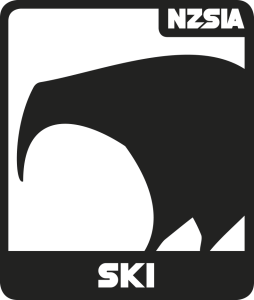Adapting The Pathway For Beginners
What needs to change in order to make the lessons effective is the way the information is communicated, the pace at which it is delivered and the amount of practice/movement time given. The information in this section complements the adult pathway. It outlines some tasks and games to use and also offers some ideas as to what to expect from younger children.
Technical Know-how & Teaching Tactics
Begin with a warm up game without skis on. This could be tag, an obstacle course made of skis, wagon wheel (skis arranged as the spokes of a wagon wheel, children jump or hop over the spokes/skis depending on your command) or even just walking around the teaching area. This gives you time to observe each of your students’ cognitive, affective and physical abilities in a relatively controlled environment.
Explore all four movements through more play time. Experience big steps, little steps, walking forwards, backwards, sideways and round in circles. Give them time to get more comfortable with ski boots on, within the new environment.
As a team, create clear imagery that relates to an effective skiing stance. Super hero position, soccer goalie position, skateboarding stance etc.
Show them how to put skis on and take them off. Show them how to get snow off the bottom of the boots. For the little children, getting them to sit down and bang their boots together is helpful.
Moving around on one ski
Moving around on two skis
Hot Tip
 Self Reflection
Self Reflection
Straight Runs
Choose the terrain carefully, work up the hill slowly so the skiers are introduced to speed very gradually.
Review stance with some simple kinaesthetic cues, e.g. feel the front of your boots, stand up tall:
- For younger children it is useful to have a piece of carpet or matting to walk up, for older kids walking or skating up the hill builds great skills (outside ski balance and edging skills)
- Choose exercises to develop fore/aft and lateral balance. Hopping, flexing up and down, catching a ball or glove, walking down the hill are all useful exercises.
Moving is the key to teaching children. Creative use of the environment and terrain can encourage children to learn through movement not only when they are sliding down the hill but also when they are moving across or up the hill. Encourage older children to skate up the hill instead of taking the carpet or rope tow every time. This is great for building outside ski balance and edging skills.
Hot Tip
 Self Reflection
Self Reflection
Gliding wedge – Basic wedge turns
On the flat introduce the skiers to the wedge, do lots of practice here before sliding. It is not a problem if a child’s hand makes a wedge. Sometimes it works well to encourage younger children to do this. Use the same terrain as the straight runs, this time in a gliding wedge.
Encourage students to identify the gap size between the tips and tails of the skis when making a wedge. “Mouse size gap” for the tips, “elephant size gap” for the tails.
Encourage the students to use both legs and brush the skis apart at the same time.
Lots of repetition of the gliding wedge with focus on wedge sizes and how they relate to speed control.
Once they can control their speed in a gliding wedge start to introduce turning. Easy terrain is very important to ensure the wedge size is small and able to be turned easily.
A follow me approach is useful to demonstrate the turn shape. Easy terrain is very important for this next step. If speed is an issue then the skiers will use a big wedge which will be very difficult to turn.
Encourage the skiers to “stand up tall” and point their toes where they want to go. A follow me approach is useful here so the skiers can concentrate on the new activity.
Once they can make a slight change in direction it’s adventure time for lots of mileage and practice. Turn size can be encouraged through this part of the lesson: “Turn your toes for longer.”
Hot Tip
For very young skiers pointing their toes and waving to say “hello” to each side of the slope is a great game to play.
Give them an adventure by setting up an obstacle course changing direction around a series of snowballs.
Outside ski balance can be introduced by getting the children to start to pay attention to what they feel in their feet. Pointing to which foot feels heavier is a good way to check for understanding.
Squashing the front of the boot as they move round the turn encourages lateral and vertical movement toward the outside ski. Some children will not grasp the concept of left and right until they are seven- or eight-years-old, so use other ways to make this distinction. (Giving each foot a name or colour is one idea.)

